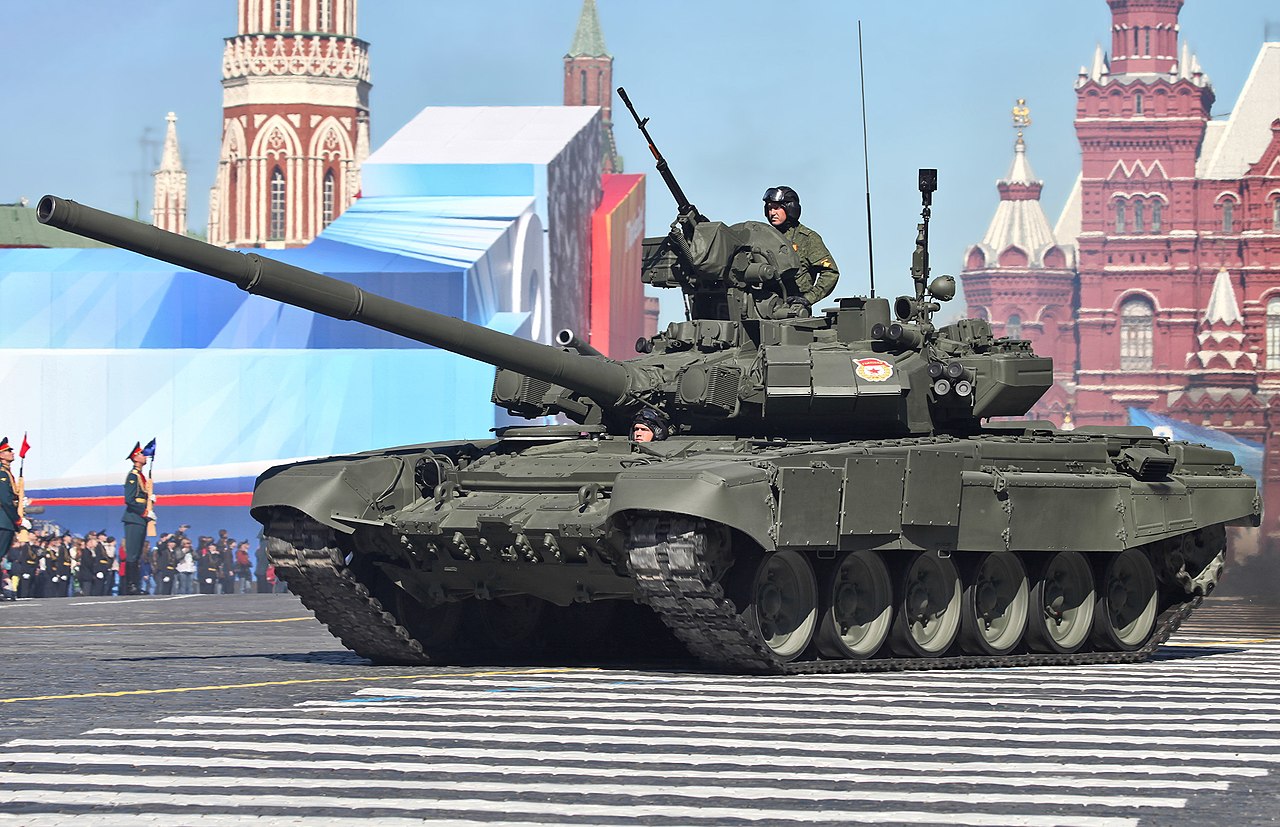Ukraine Is Blowing Up Abandoned Russian Tanks To Win A PR Victory Over Moscow

- The crew trying to get away is an old trick, especially during this war, where most tanks, armoured vehicles, and trucks have been left behind since the beginning.
- The conscripts were supposed to hold the backs to stop the Ukrainians from breaking through, while the professional military took over the rest of the areas on the front lines.
A retired tanker from the Indian Army has pointed out strange things and inconsistencies in videos of Russian armour being destroyed, especially the ones where simple explosives are dropped from drones on tanks.
The T-90S is interesting because it is the same tank that the Indian Army uses, but it doesn’t have the Shtora Active Protection System (APS). During the deal, the Indian government chose to buy the tank without it.
A leading Ukraine war reporter, Special Kherson Cat (@bayraktar 1love), tweeted a picture of a T-90S from the front, showing that the barrel had been shot out and was lying in front of the tank. India has given the T-90S a new name: the “Bhishma.”
The first destroyed Russian T-90S tank (T-90S “Bhishma”), which was originally intended for export to India, was reported.
P.S: Earlier in autumn footages of T-90S tanks intended for deployment to Ukraine already appeared in the internet. (Photo 2-3) pic.twitter.com/CGbj909Chz— Special Kherson Cat 🐈🇺🇦 (@bayraktar_1love) January 4, 2023
After that, one of the photos in the same thread showed that the engine had taken a hard hit. The hatches above the turret and on the chassis where the driver sits are open. This means that the damage to the engine made the tank unable to move, so the crew had to get out.
The only time the crew might not have time to get out is if an artillery shell or a top-attack anti-tank guided missile (ATGM) hits the tank from above and completely destroys it.
In these situations, the metal body of the tank is completely blackened and turns a greyish colour. Colonel Rajendra Bhaduri says that this is where a few strange things happen (retd).
Ukraine Destroying Abandoned Tanks?
Bhaduri said that the many videos showing how the Ukraine used modified drones to drop bombs on Russian tanks were fake.
Bhaduri said, “Most videos of quadcopters dropping bombs on tanks show tanks that have been left behind.” He comes to this conclusion because the hatches are open and no one is seen leaving the ship when the bomb goes off. “Which crew would ride around in battle with the hatches open on their tank? “It’s such a simple mistake that even a brand-new crew won’t do it,” he said.
Also, civilian drones that are for sale don’t have guidance systems and drop bombs that aren’t guided but have crude fins added to them later.
“It’s impossible to drop these through the small hatch in a moving tank, especially from a high place. “And if a drone or quadcopter gets close, the tank crew can shoot it down with small arms,” Bhaduri says.
Nor can the small bombs alone destroy a tank that weighs more than 50 tonnes. “Some videos show a bomb that doesn’t fit through the hatch, rolls off, and lands on the engine. If the bomb weighs 5 kg, the explosive charge would weigh even less. How can it hurt the tank engine if the bomb goes off above it? So, Ukraine destroys tanks that have been left behind to get attention,” Bhaduri says.
Russian Crews Escaping – Cowardice Or Practicality?
The crew trying to get away is an old trick, especially during this war, where most tanks, armoured vehicles, and trucks have been left behind since the beginning. It looks like this has two goals.
One reason is that it makes sense not to fight a losing battle and can’t afford to lose equipment, especially if your defence industry can make more weapons to replace the ones that were lost.
Few changes have been seen in the Russian economy as a result of sanctions. At the same time, Russia has been making plans for a long time to stop using many common electronic and mechanical parts and sub-parts made in the West in its weapons and aircraft.
On the other hand, Ukraine no longer has a defence industry that works, and it is almost entirely fighting with weapons from the West. This is in line with Russia’s stated goal to “demilitarise” Ukraine.
The second goal was revealed by President Vladimir Putin on March 8 of last year. He emphasised that “conscripted soldiers” will not be used in the war, but only professional soldiers with “fixed objectives.”
So, the fact that Russia wanted to keep its professional soldiers meant that it had known for a long time that the war would last longer than six months and that a new mobilisation would cause chaos in Russian society but show that it wanted to step up its strategy.
After seeing that neither the United States (US) nor the North Atlantic Treaty Organization (NATO) wanted to negotiate and keep the war going by continuing to arm Ukraine, Russia only partially mobilised in September.
So, Ukraine was able to consolidate its gains by shoring up its defences in the east and south, which it had just taken over. It did this by hitting Russia’s long supply lines.
The conscripts were supposed to hold the backs to stop the Ukrainians from breaking through, while the professional military took over the rest of the areas on the front lines.
It also happened when Putin was the most popular and well-liked in his own country. Most people thought that the Russian economy was strong, even though the sanctions didn’t kill it completely. It’s not the same thing that Putin later admitted that the quick and hasty mobilisation of 300,000 reservists and volunteers caused some problems.
Indian T-90 Is Just An Upgraded T-72
The T-90A has the Shtora system, but the new T-90MS has the Kontakt APS system. The Indian government may not have taken the Shtora to save money. “The APS is an important part of a tank’s defence against incoming projectiles.
No matter how much weight the new engine adds to the tank, it can handle it. By overwhelming the APS, an enemy will have to fire multiple rounds or anti-tank rocket-propelled grenades (RPG) to hit it, making it less likely that the first round will hit.
So, the Indian T-90S Bhishma is just an improved T-72 without the Shtora,” Bhaduri said.







Facebook Comments